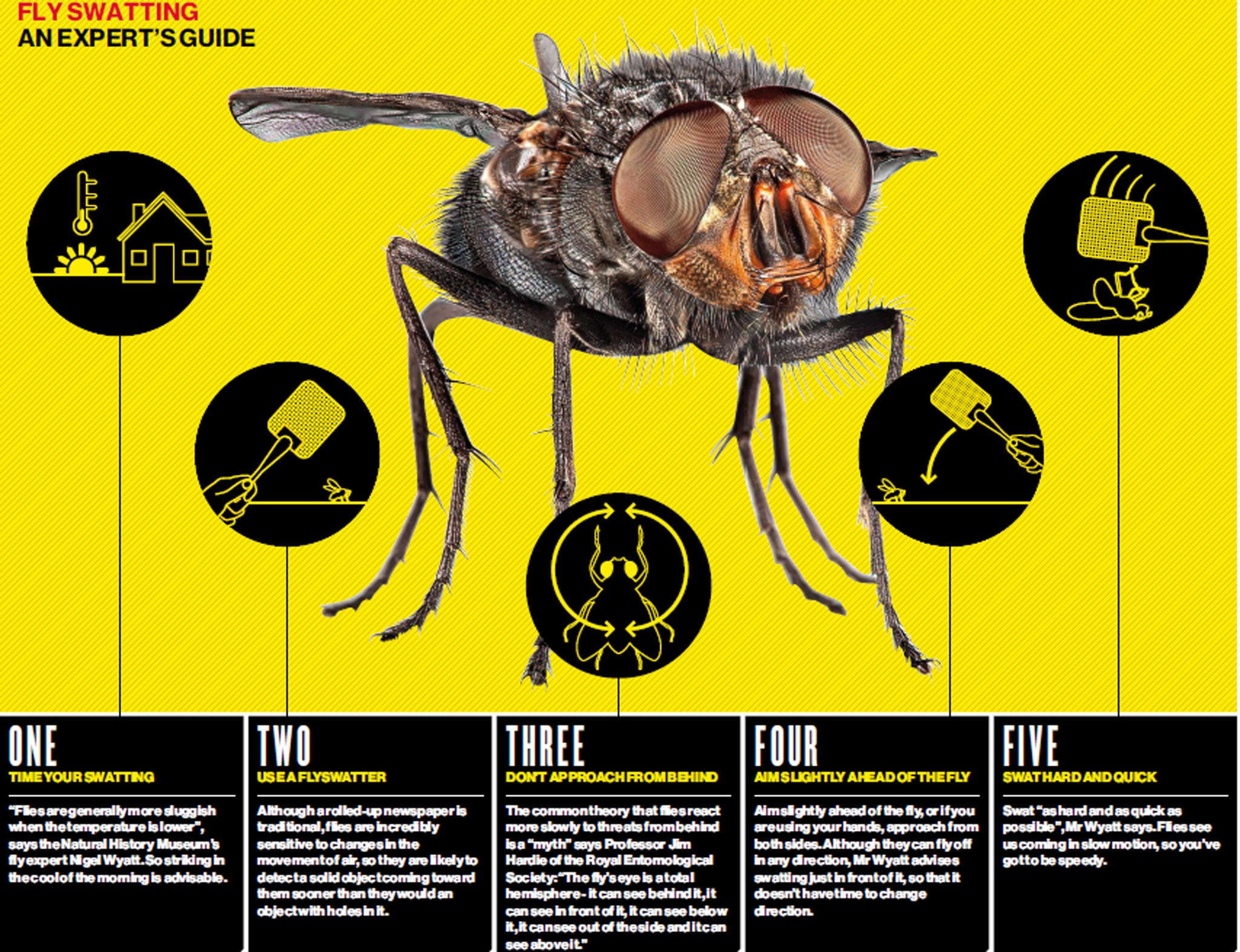Fly swatting: A beginner's guide
Experts - and Independent readers - give their tips

It is a problem that has plagued mankind, probably ever since our ancestors became conscious of a persistent buzzing noise near the entrance to the cave: what is the best way to swat a fly?
On Monday, The Independent reported on a study that suggested flies perceive time in slow motion - thus accounting for their ability to dodge a rolled-up newspaper.
The response was overwhelming – and revealed that there may be as many theories on how to kill a fly, as there are species of flies living in Britain (7,000, remarkably).
Our letters page, for 26 years a platform for opinion on the great matters of the day, has carried the on-going debate.
Click image to see full-size
Tony Wood of Farnborough, ventured that the common house fly was not invincible, advising us to “wiggle both hands either side of the fly” before striking. John Naylor, of Ascot, proposed “a simpler method” involving a flexible steel ruler aimed slightly behind the fly. A further refinement was advanced by Richard Bell of Cadleigh. He said: "Use a similar device but broader and with holes in it”.
Now, having studied the evidence and consulted two of the UK’s leading experts in flies, The Independent can reveal, if not the conclusive method for swatting a fly, a reasonable best practice guide.
It is no easy task. The two most likely flies we encounter in the home, the house fly and the blue bottle, are surprisingly formidable opponents.
“They have evolved over millions of years to escape predators,” said Nigel Wyatt, curator of diptera at the Natural History Museum’s Department of Life Sciences, who has access to a collection of three million fly specimens, which fill around 8,000 drawers in the museum.
Not only can they, as claimed in this week’s study in the Animal Behaviour journal, process seven times as much information in a second than a human, they also have “360 degree vision” and “very fine hairs that will detect air movement”, making any kind of stealthy approach difficult, according to Professor Jim Hardie, director of science at the Royal Entomological Society.
To counteract a fly’s reaction speed the attempt must be made in the morning when the cool air leaves the fly more sluggish than usual. A fly swatter should be used instead of the more traditional rolled up newspaper, to minimise the change in air pressure. Then, a point should be targeted just in front of the fly to anticipate its most likely line of flight (although flies can launch themselves in any direction).
Then, according to Mr Wyatt, the key is to “swat them as hard and quick as possible.” However, being a curator of flies, he rarely dispatches them himself (“I tend to worry more about mosquitoes”.)
Professor Hardie agrees. “I tend not to swat them, they’ve got a right to life as well. Unless they’re biting,” he said.
In the words of Independent reader David Bruton, of Colchester: “The fast reaction time of a fly is so easily and humanely defeated by a very slow-moving glass, which the fly does not see approaching; just don’t be tempted to speed up at the end. A piece of card completes the flycatcher. No mess, no death, so zen.”
Join our commenting forum
Join thought-provoking conversations, follow other Independent readers and see their replies
Comments
Bookmark popover
Removed from bookmarks